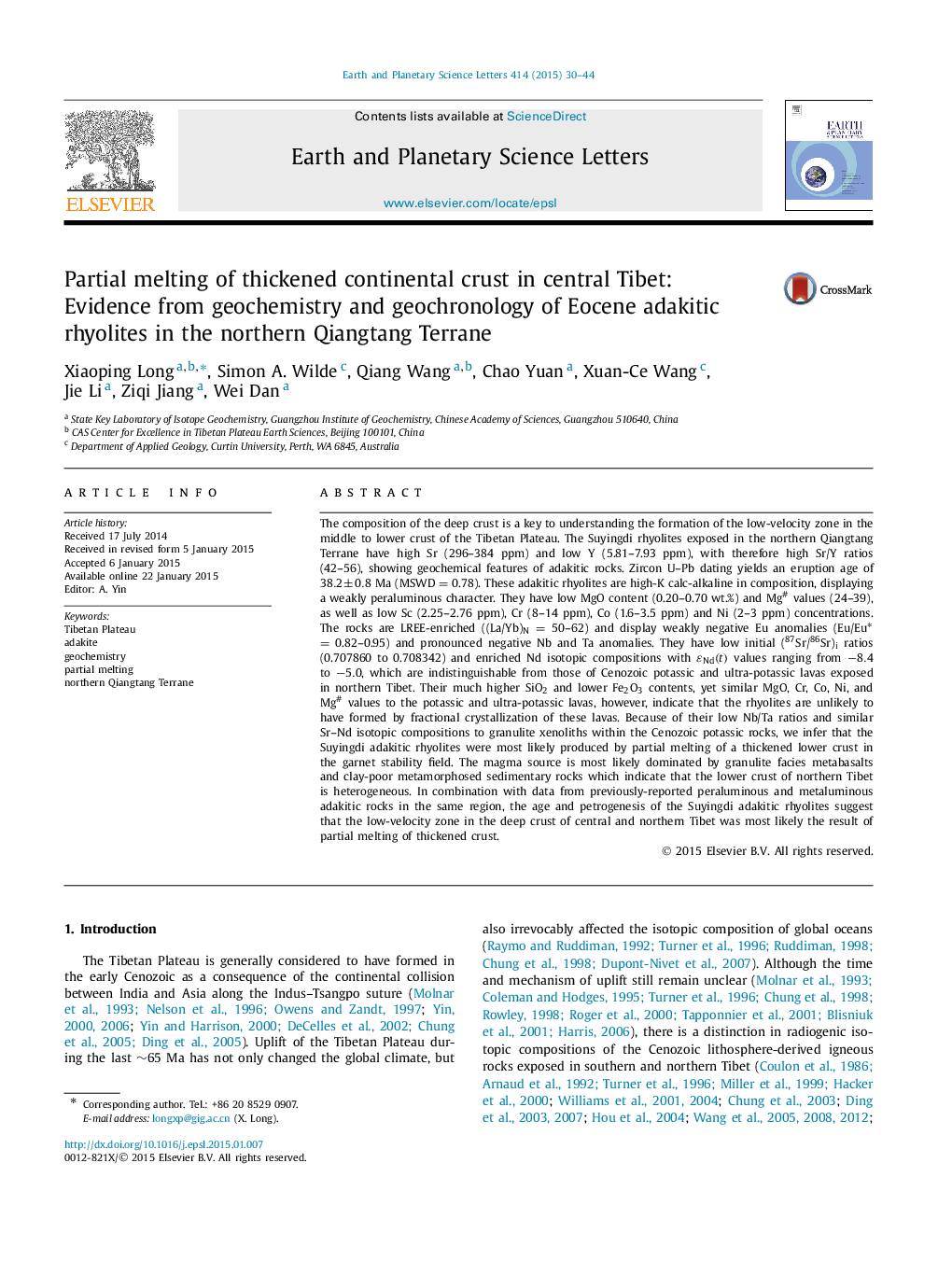| کد مقاله | کد نشریه | سال انتشار | مقاله انگلیسی | نسخه تمام متن |
|---|---|---|---|---|
| 6428565 | 1634742 | 2015 | 15 صفحه PDF | دانلود رایگان |

- The Suyingdi rhyolites erupted at 38.2 Ma and show geochemical characteristics of adakitic rocks.
- The rhyolites were most likely produced by partial melting of a thickened lower crust.
- The lower crust of central Tibet is heterogeneous.
- The low-velocity zones in the deep crust of central and northern Tibet were generated by crustal melting.
The composition of the deep crust is a key to understanding the formation of the low-velocity zone in the middle to lower crust of the Tibetan Plateau. The Suyingdi rhyolites exposed in the northern Qiangtang Terrane have high Sr (296-384 ppm) and low Y (5.81-7.93 ppm), with therefore high Sr/Y ratios (42-56), showing geochemical features of adakitic rocks. Zircon U-Pb dating yields an eruption age of 38.2±0.8 Ma (MSWD = 0.78). These adakitic rhyolites are high-K calc-alkaline in composition, displaying a weakly peraluminous character. They have low MgO content (0.20-0.70 wt.%) and Mg# values (24-39), as well as low Sc (2.25-2.76 ppm), Cr (8-14 ppm), Co (1.6-3.5 ppm) and Ni (2-3 ppm) concentrations. The rocks are LREE-enriched ((La/Yb)N = 50-62) and display weakly negative Eu anomalies (Eu/Euâ = 0.82-0.95) and pronounced negative Nb and Ta anomalies. They have low initial (87Sr/86Sr)i ratios (0.707860 to 0.708342) and enriched Nd isotopic compositions with εNd(t) values ranging from â8.4 to â5.0, which are indistinguishable from those of Cenozoic potassic and ultra-potassic lavas exposed in northern Tibet. Their much higher SiO2 and lower Fe2O3 contents, yet similar MgO, Cr, Co, Ni, and Mg# values to the potassic and ultra-potassic lavas, however, indicate that the rhyolites are unlikely to have formed by fractional crystallization of these lavas. Because of their low Nb/Ta ratios and similar Sr-Nd isotopic compositions to granulite xenoliths within the Cenozoic potassic rocks, we infer that the Suyingdi adakitic rhyolites were most likely produced by partial melting of a thickened lower crust in the garnet stability field. The magma source is most likely dominated by granulite facies metabasalts and clay-poor metamorphosed sedimentary rocks which indicate that the lower crust of northern Tibet is heterogeneous. In combination with data from previously-reported peraluminous and metaluminous adakitic rocks in the same region, the age and petrogenesis of the Suyingdi adakitic rhyolites suggest that the low-velocity zone in the deep crust of central and northern Tibet was most likely the result of partial melting of thickened crust.
Journal: Earth and Planetary Science Letters - Volume 414, 15 March 2015, Pages 30-44